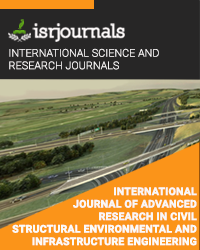corrosion assessment of reinforced concrete using different steel grades with or without epoxy-coating
P. Damle,
Published in International Journal of Advanced Research in Civil,Structural,Environmental and Infrastructure Engineering and Developing
ISSN: 2320-723X Impact Factor:1.7 Volume:2 Issue:1 Year: 08 May,2014 Pages:42-48

Abstract
Corrosion in reinforced concrete occurs either because of ingression of chloride ions onto the embedded steel or because of carbonation which leads to reduction in alkaline environment at the level of the embedded steel. Often, the two processes complement each other and initiate corrosion. The money spent on the repair of corroded reinforced structures amounts to hundreds of millions worldwide. This research aims at detection of corrosion in RC samples using electrochemical techniques employed in the past. The principle used is that the probability of corrosion is the function of the potential difference measured between the reinforcement and the surface of concrete. The samples are subjected to accelerated corrosion using impressed current technique to cause corrosion to an extent that would occur in several decades. Also in this research, it is intended to apply this technique for on-field detection of corrosion so as to plan the repairing procedure effectively.
Kewords
corrosion, half-cell potential, impressed current, epoxy
Reference
[1] T. Visalakshi and Bhalla. S (2011) “Detection and quantification of rebar corrosion using impedance method” International Journal of Earth Sciences and Engineering, ISSN0974-5904, volume 04, no. 06SPL, October 2011, PP889-891 [1] Paul Lambert (2002), Corrosion Protection Association Monograph-1 [2] Mansfield Corrosion (1981) [2] Nelson Silva (2013), Chloride Induced Corrosion of Reinforcement Steel in Concrete, Threshold Values and Distributions at the Concrete-Steel Interface [3] Gemite Products INC. (2005), Technical Memorandum [4] DuraCrete (1997), Mini Project on Chloride Induced Corrosion [5] Indian Standards 456:2000 Plain and Reinforced Concrete – Code of Practice, Clause 8.2 Requirements for Durability [6] Guangling Song and Ahmed Shayan (1998), Corrosion of steel in concrete: Causes, detection and prediction

